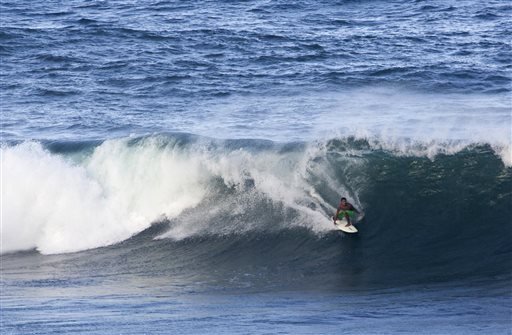All About Oceans

by Beth Rowen
Related Links |
Oceans cover more than 70% of Earth’s surface. About 97% of Earth’s water is contained in oceans and seas. The five oceans—the Pacific, Atlantic, Indian, Southern, and Arctic—are all connected and form an enormous mass of water. Seas are smaller bodies of salty water within the oceans.
The oceans are salty, which makes them unsuitable for drinking. Most of the salt comes from minerals from rocks and soil that have been washed from the land and carried into the oceans by rivers. The minerals are mostly chloride and sodium, which combine to make salt. Most of our table salt comes from the oceans.
The salinity, the amount of salt, varies in the oceans. Oceans in warm, dry areas are more salty than the oceans in cold climates, such as near the North and South Poles. That’s because ocean water in warmer areas evaporates quicker, leaving more salt behind. The saltiest water in the world is in the Red Sea, which is almost entirely surrounded by deserts.
Tides
Tides, waves, and currents cause the oceans to move constantly. A tide is the regular rise and fall of the sea level in oceans and other bodies of water. It is caused by the effect of the Moon’s gravity on Earth. Water on the side of Earth that is closest to the Moon is pulled in the direction of the Moon, creating a bulge in the ocean. On the other side of Earth, the Moon’s gravity pulls Earth away from the water, producing a matching bulge. These bulges form high tides. Because the Earth rotates on its axis, every point on Earth (except the poles) travels through the two high tide zones and the two low tides zones each day. This is why there are two high tides and two low tides each day.
Spring tides, which are especially strong, occur during new and full moons—every two weeks—when Earth, the Moon, and the Sun are in alignment. Neap tides, which are weaker, occur during first and last quarter moons, when the Sun, the Earth, and the Moon form a right angle.
Waves
Wind causes waves in the ocean. As the wind blows over the surface of the ocean, it pushes on the water and transfers some of its energy to the water. The water gets energy from the wind because of the friction between air molecules and water molecules. It may seem that waves move forward or horizontally, but they do not. They move up and down. You can see this by watching a buoy in the water. It bobs up and down with waves rather than moving from side to side.

